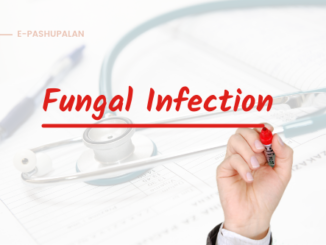Introduction
So far, around 100,000 species of fungus have been identified, with a large majority obtaining nutrition from living in close proximity to other creatures, primarily plants. Many fungi are pathogenic, meaning they may harm humans or cause significant economic losses owing to contaminated crops or animal diseases. In fungal phylogenies, parasitic fungi are found intermingled with saprophytes and mutualists, implying that transitions between different life-history strategies have happened often within the fungal kingdom.
The two major groups that have been traditionally recognized among the true fungi are the Ascomycota, including the yeasts and filamentous fungi, with several important model species (e.g., Saccharomyces cerevisiae and Neurospora crassa) and the Basidiomycota, including the conspicuous mushrooms, the rusts, and the smuts.
For most of their evolutionary history, most fungi, particularly fungal diseases, have relied on other species for their nutrients. However, numerous novel fungal diseases developed over the twentieth century. This is most likely due to human actions that have drastically altered global ecosystems, such as climate change, extensive deforestation, habitat fragmentation and urbanisation, changes in farming methods, and global trade.
To understand how new diseases emerge, and more generally to understand the spread and maintenance of diseases, it is essential to study dispersal, mating systems, host adaptation, and mechanisms of speciation. The advent of molecular markers offers great tools for studying these key processes of parasite biology.
Major Human and Animal Pathogenic Fungi
Ascomycetes
Candida species are the most prevalent pathogens that cause invasive fungal infections in humans. Infections can vary from easily treated mucocutaneous diseases, which can be acute in AIDS patients, to severe invasive disease with considerable morbidity and death, which is most commonly seen in individuals with immune system suppression. Another major cause of human fungal infections is the filamentous pathogen, Aspergillus fumigatus and other closely related Aspergillus species. Aspergillosis, primarily invasive aspergillosis, is an emerging disease in the immunocompromised population.
Basidiomycetes
Of the seven species distinguished, C. neoformans species are prevalent, ubiquitous worldwide, largely associated with pigeon guano, and a common cause of meningitis in immunocompromised hosts. C. neoformans has been further subdivided into two distinct species, C. neoformans and Cryptococcus deneoformans (formerly serotypes A and D, respectively) based on unique antigenic profiles and sequence divergence. This distinction is clinically relevant, as serotype A strains cause the vast majority of infections globally, with high incidences in the AIDS and transplant populations.
New and Emerging Mycoses
- Evolution and Emergence of Pathogenic Cryptococcus gattii Genotypes in the Pacific Northwest: As of 1999, C. gattii has emerged as a primary pathogen in northwestern North America, including both Canada and the United States. This outbreak now spans a large geographical range, with levels of infection as high or higher than anywhere else globally, with an annual incidence on Vancouver Island of about 25 cases/million.
- The Global Emergence of the Amphibian Pathogen Batrachochytrium dendrobatidis (Bd): Only discovered in 1997 and named in 1999, Bd is a basal fungal lineage in the Chytridiomycota. Many species of chytrid have been described in aquatic environments and soils, as free-living or commensal organisms, and as parasites of algae, invertebrates, and fungi. Of these, Bd is unique in that it is the only chytrid known to parasitize vertebrates. Bd is now known to be widespread in all continents except Antarctica.
Plant Pathogenic Fungi: With over 8000 species known to cause illness, fungus cause more plant diseases than any other category of plant pests such as viruses or bacteria. Fungi-caused plant diseases have a wide range of symptoms. Pathogenic fungus can cause lesions on leaves and flowers, stem cankers, root and fruit rot, and plant sterilisation, among other things. Pathogenic fungus may be found in nearly all crops, including cereals, corn, rice, potatoes, beans, peas, soybeans, fruit trees such as coffee and cacao, and ornamental plants and trees.
New and Emerging Plant Diseases: Fungi are also responsible for about 30% of emerging diseases in plants (i.e., including Oomycetes), which is three times more than for emerging diseases in humans or wildlife. - First, epidemics caused by invasive pathogens have been repeatedly reported to alter natural ecosystems.
- Second, primary food production is at risk due to emerging crop diseases; for example the Irish Potato Famine caused by P. infestans on cultivated potato in the beginning of the 20th century.
Modern Molecular Epidemiological Tools for Investigating Fungal Diseases: Epidemiology is a science that focuses on understanding the factors that influence disease dynamics in location and time, with a focus on being quantitative and predictive. Molecular biology’s incorporation with traditional epidemiology research transformed the field in the 2000s. This triggered the creation of a new field, molecular epidemiology, which aims to identify the relevant units of analysis of pathogens involved in transmissible disease using “the various molecular methods that aim to identify the relevant units of analysis of pathogens involved in transmissible disease.” Two methods in particular are now predominant in molecular epidemiological studies of fungal pathogens: MLST, for Multi-Locus Strain Typing and MLMT, for Multi-Locus Microsatellite Typing.
Population Genetics of Pathogenic Fungi
Reproductive System
Outcrossing promotes genetic exchange and can hence accelerate the spread of new mutations in combination with other beneficial alleles, which is critical in the context of an arms race between hosts and pathogens. By contrast, selfing or asexual reproduction provides insurance of reproduction for species having a low probability of finding a mate, and these species can therefore invade distant territories more easily and/or more rapidly.
Dispersal, Migration, and Gene Flow
Dispersal is the movement of gametes or individuals. Parameters of dispersal can be estimated by:
- Direct methods, relying on direct observation of dispersing individuals at particular life-history stages, which provides a measure of actual dispersal or
- Indirect methods, that use the changes in some characteristics of populations caused by movement of individuals, and provide a measure of effective dispersal.
Because the movement of individuals obviously leads to movement of genes, the study of dispersal is tightly related to the study of gene flow (direct methods) and the monitoring of particular genotypes (indirect methods).
It further depends upon:
• Rate and Direction of Gene Flow
• Dispersal Distance
• Distribution of Gene Flow in Time and Along the Genome
Genomics of Fungi
The gene families include cell surface receptors such as the G-protein-coupled receptors, which bind exogenous ligands and participate in signaling cascades; secreted proteins, which constitute a diverse group of small peptides such as toxins, proteinaceous effectors, and hydrolytic and degrading enzymes; protein effectors that suppress plant defenses and alter cellular metabolism; and secondary metabolites such as nonspecific and hostspecific toxins. Gene families typically expand by gene duplication, which in fungal genomes range from whole-genome duplications to several instances of tandem duplications, such as events involving pathogenicity-related gene families including adhesins, the ABC transporters, and major facilitator superfamily (MFS) drug efflux systems that help fungi detoxify products from the plants defenses, the multidrug-resistance transporter families, and major surface glycoproteins.
Conclusion
Although still in their early stages and restricted to a few diseases, comparative genomic investigations in plant pathogenic and symbiotic fungi have already yielded numerous insights into the evolution of the pathogenic lifestyle, particularly into the mechanisms of virulence and host adaptations. In terms of epidemiology, molecular techniques have a lot to offer when it comes to studying fungal infections since they may reveal ecological and micro evolutionary processes. For several fungal diseases, population genetic methods have offered crucial insights into their mating systems, dispersion, and population structure. Further, new methods to analyze data are being developed at a rapid pace, using for instance the Bayesian or the coalescence frameworks, or coupling geography and genetics to unravel migration and speciation histories, which should allow even more powerful inferences on the evolutionary processes.
| The content of the articles are accurate and true to the best of the author’s knowledge. It is not meant to substitute for diagnosis, prognosis, treatment, prescription, or formal and individualized advice from a veterinary medical professional. Animals exhibiting signs and symptoms of distress should be seen by a veterinarian immediately. |






Be the first to comment